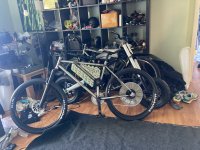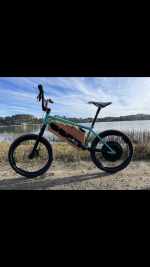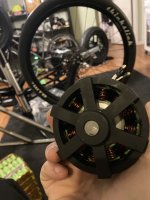pwd
10 kW
I'm having a bit of a brain block and could use some help understanding this concept.
On a mid-drive motor such as the Cyclone 3000W or pretty much any other mid-drive aimed for a bicycle; there is some sort of reduction from the main motor shaft to the chainring output. On the Cyclone; there is a planetary gear reduction (and another from the motor to chainring but I'll ignore that for now), on the BBSXX there is an internal geared reduction.
Why not just wind the motor for a lower RPM per volt / lower kv and do away with the internal reduction part? I understand that electric motors will be more efficient at higher rpm, but doesn't lowering the kv have a similar effect?
On a mid-drive motor such as the Cyclone 3000W or pretty much any other mid-drive aimed for a bicycle; there is some sort of reduction from the main motor shaft to the chainring output. On the Cyclone; there is a planetary gear reduction (and another from the motor to chainring but I'll ignore that for now), on the BBSXX there is an internal geared reduction.
Why not just wind the motor for a lower RPM per volt / lower kv and do away with the internal reduction part? I understand that electric motors will be more efficient at higher rpm, but doesn't lowering the kv have a similar effect?








